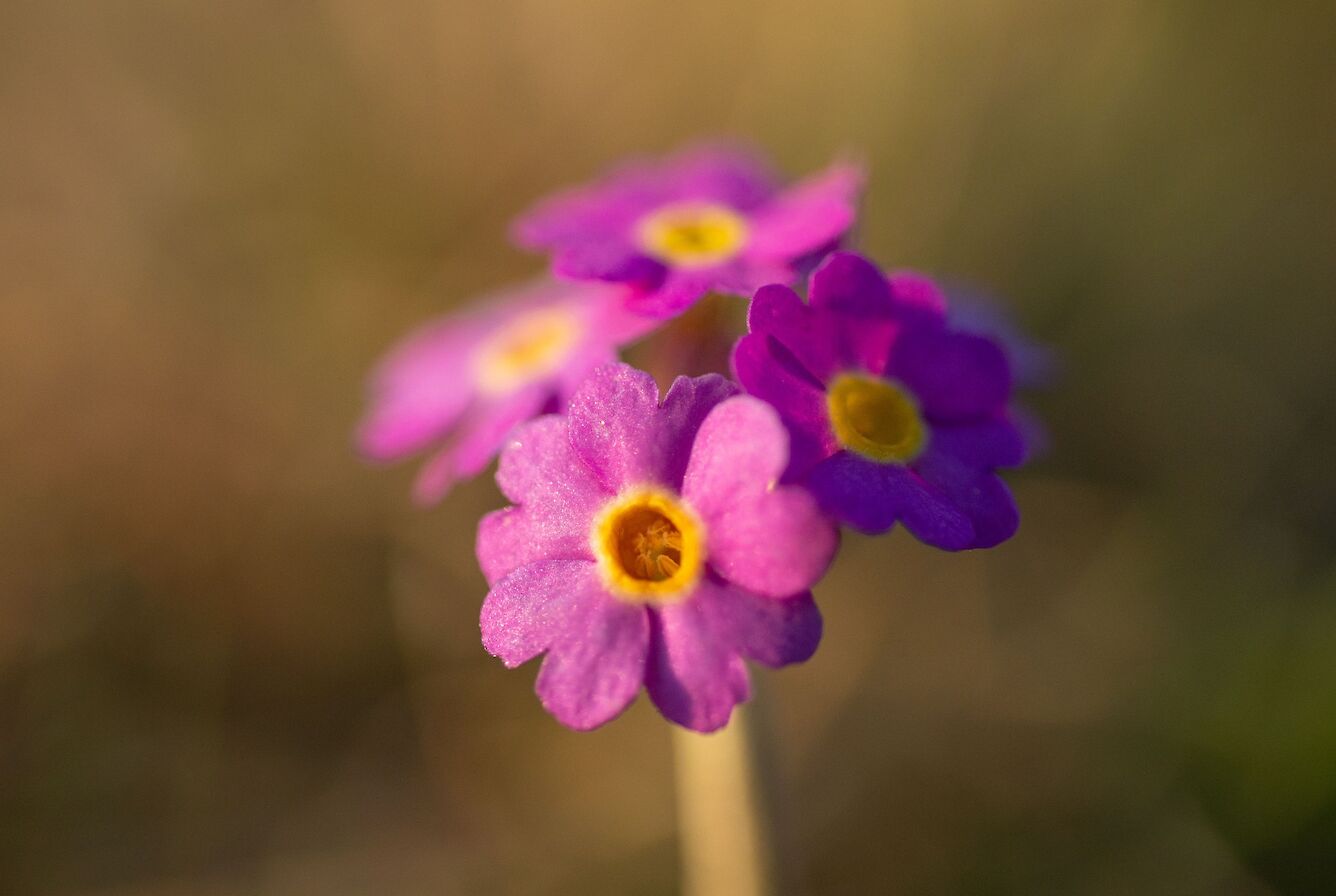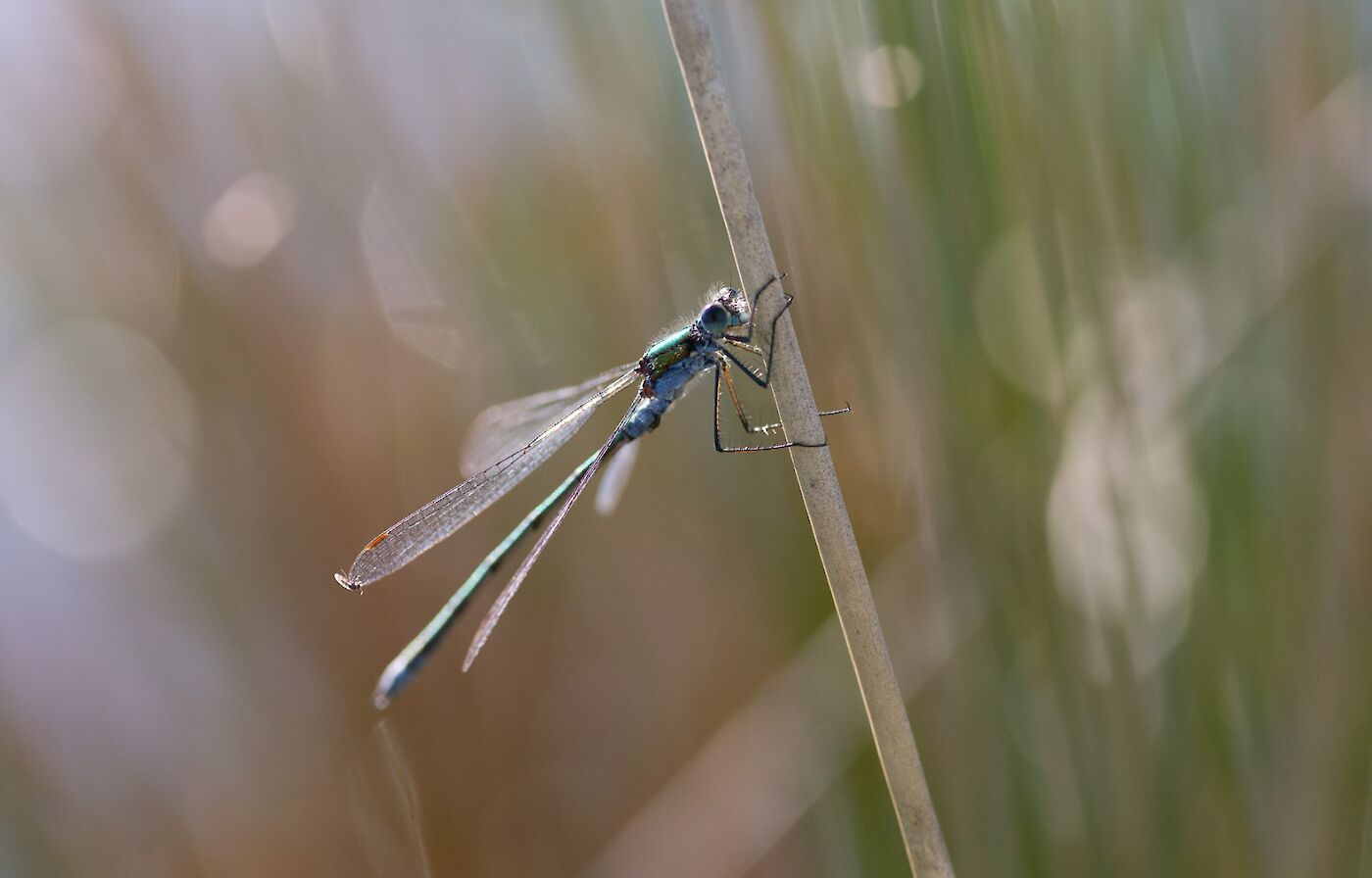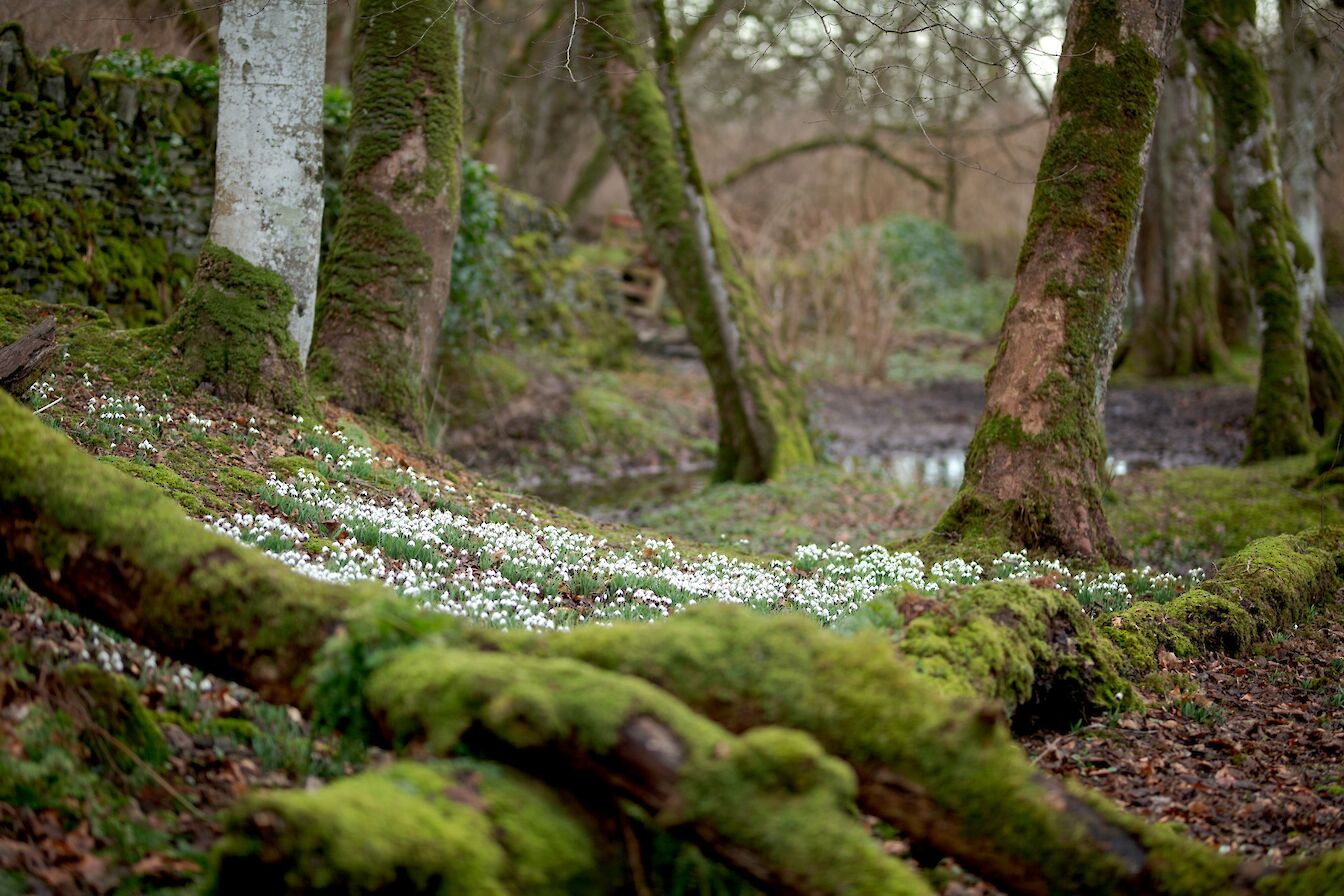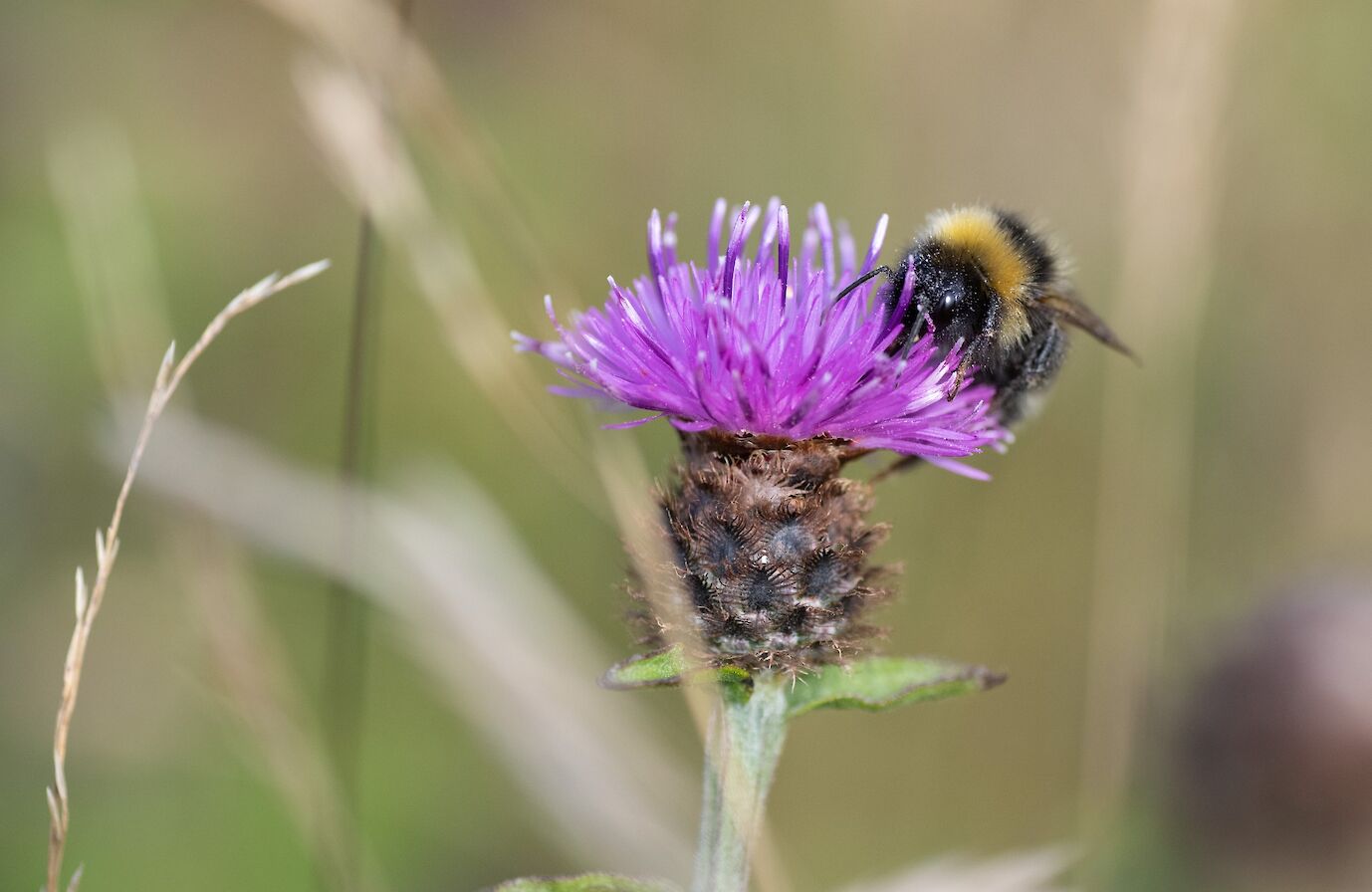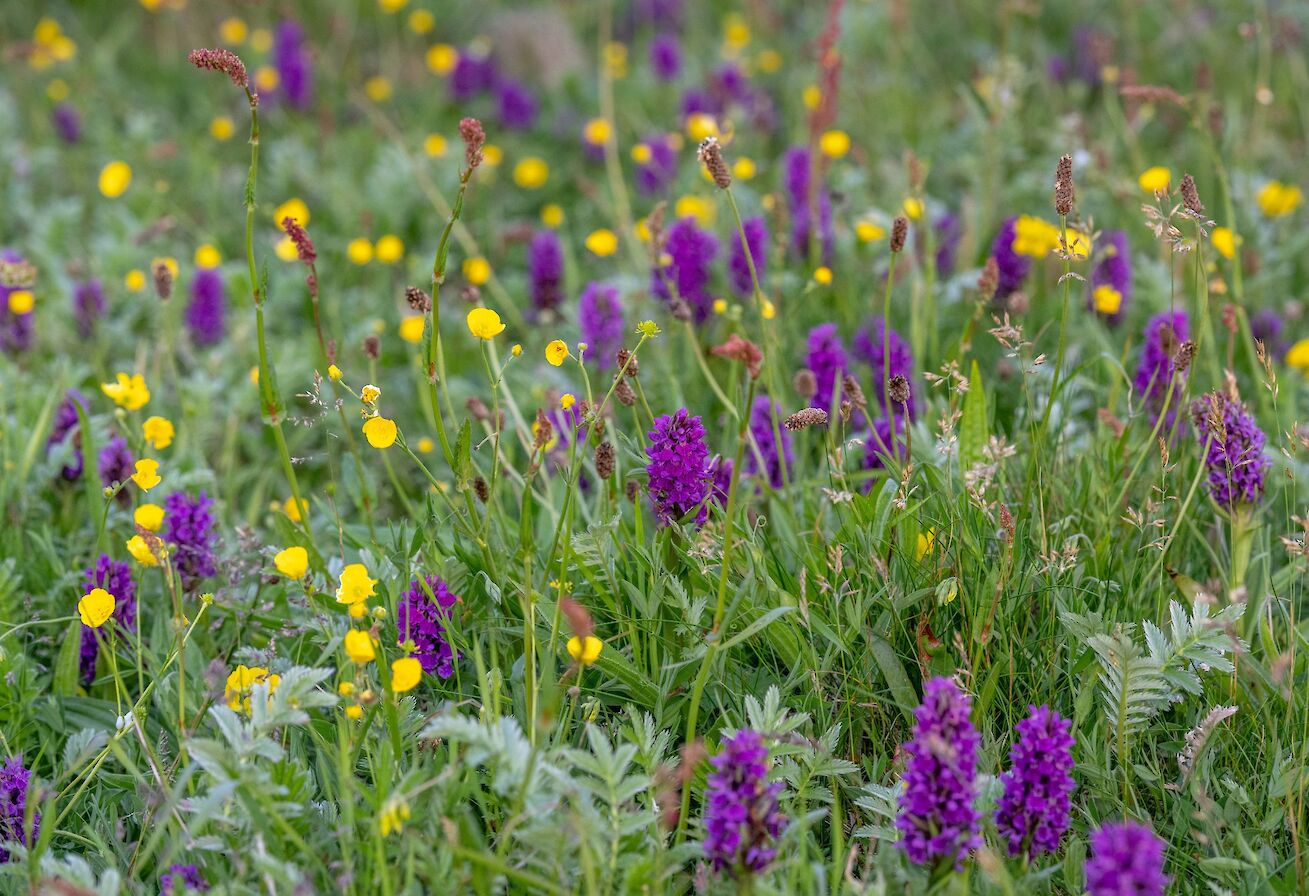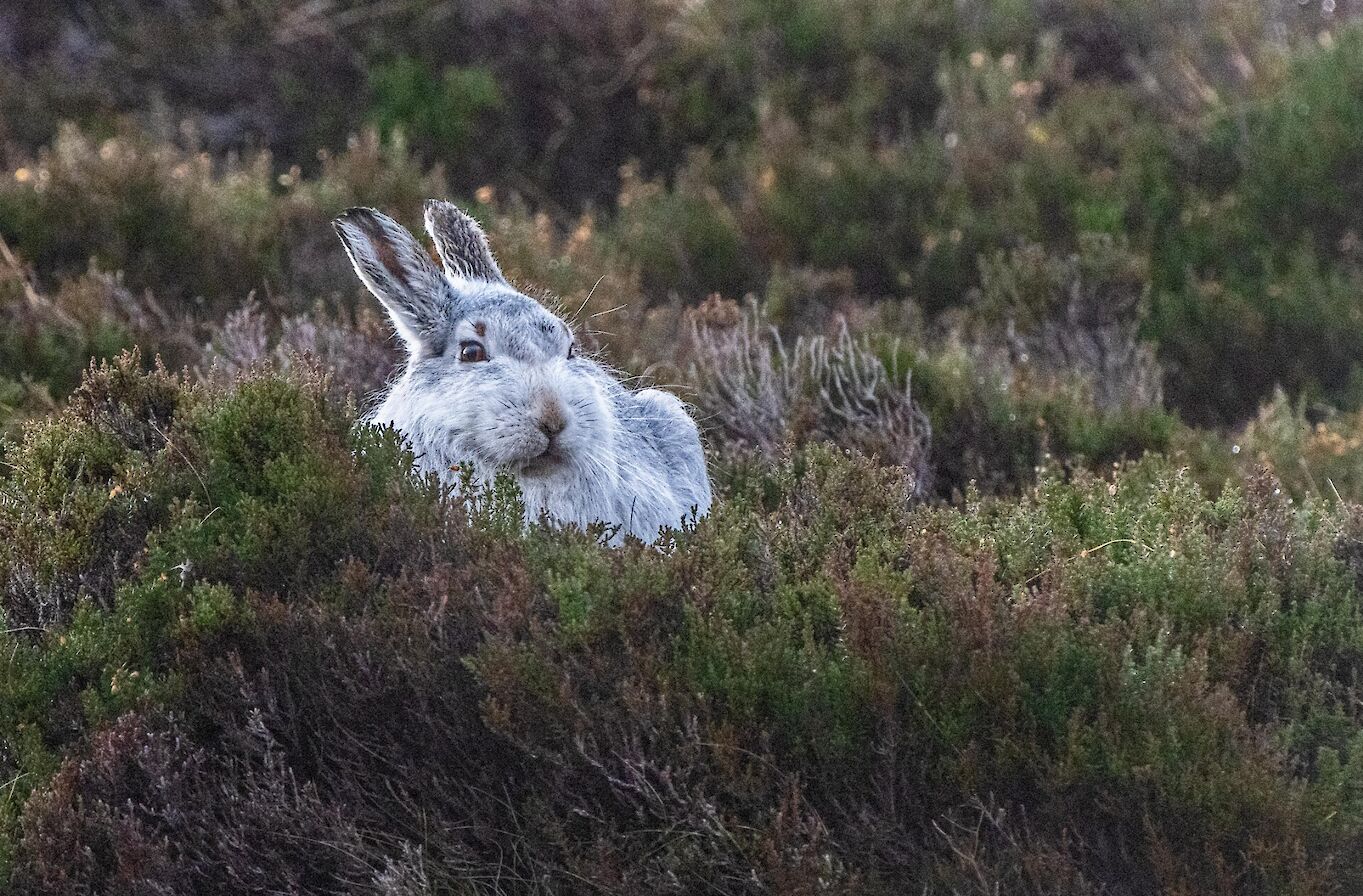Orkney is famed for its incredible wildlife, but these fertile islands are also home to a rich array of flowers and plants, and the insects that depend on them.
There are around 500 species of native plants here, thriving in a vast range of habitats, including island shores, coastal heath, boggy wetlands and Hoy’s Highlands-esque landscape.
Wildflower wonderland
Orkney is one of the few locations where you can find one of Britain's rarest and most treasured flowers - the tiny Primula scotica, or Scottish primrose. This little purple gem only grows in Orkney, Sutherland and Caithness, with Yesnaby, Rousay and Papa Westray amongst the best places to see it. Luckily, it blooms twice a year – in May and July – so you have two chances to spot it.
Spring is when Orkney’s wildflowers begin to put on a show, with meadow buttercup, flag-iris, marsh marigold and primrose just some of the plants you’ll see. Visit during the summer months and you’ll be greeted by green fields and wildflowers. A walk along the coastline will reveal clumps of wild angelica, red campion and sea thrift, with beautiful marsh orchids amongst them. Those special months at midsummer, as May turns to June and July and the sun never seems to set, are a magical time to be in the islands, with an evening walk illuminated by soft light and all the colours of the fertile local landscape.
Woodland walks
Orkney isn’t famed for its trees – indeed, it can often seem like you’ve travelled for miles without seeing one – but in reality, there are plenty of patches of woodland to explore. There are also a number of native trees that are hardy enough to withstand the island climate, including willow, aspen, and downy birch.
The UK’s most northerly woodland can be found at Berriedale in Hoy, tucked back amongst the hills en-route to Rackwick, an oasis amongst the wild moorland of this special island. Other locations worth a visit include Happy Valley and Binscarth Wood in the West Mainland, and Olav’s Wood in South Ronaldsay.
Insects and invertebrates
As you might expect with such an array of plant life, insects thrive here. There are several species of butterfly, and dragonflies and damselflies are common in places like Hoy. Orkney is also one of the last habitats of the endangered great yellow bumblebee, which can be seen here during the summer months.
And yes, the dreaded midge does make an appearance in Orkney, especially in places with extensive moorland, but the all-too-common Orcadian breeze often keeps them at bay!
Habitat protection
Orkney’s importance as far as flora and fauna goes is highlighted by the fact the islands are home to 36 Sites of Special Scientific Interest, 13 Nature Scot Special Protection Areas, and 13 reserves managed by the RSPB. There are also a range of other wildlife projects managed by many other organisations, including the Scottish Wildlife Trust, the Farming and Wildlife Advisory Group, Orkney Field Club and Orkney Islands Council.
